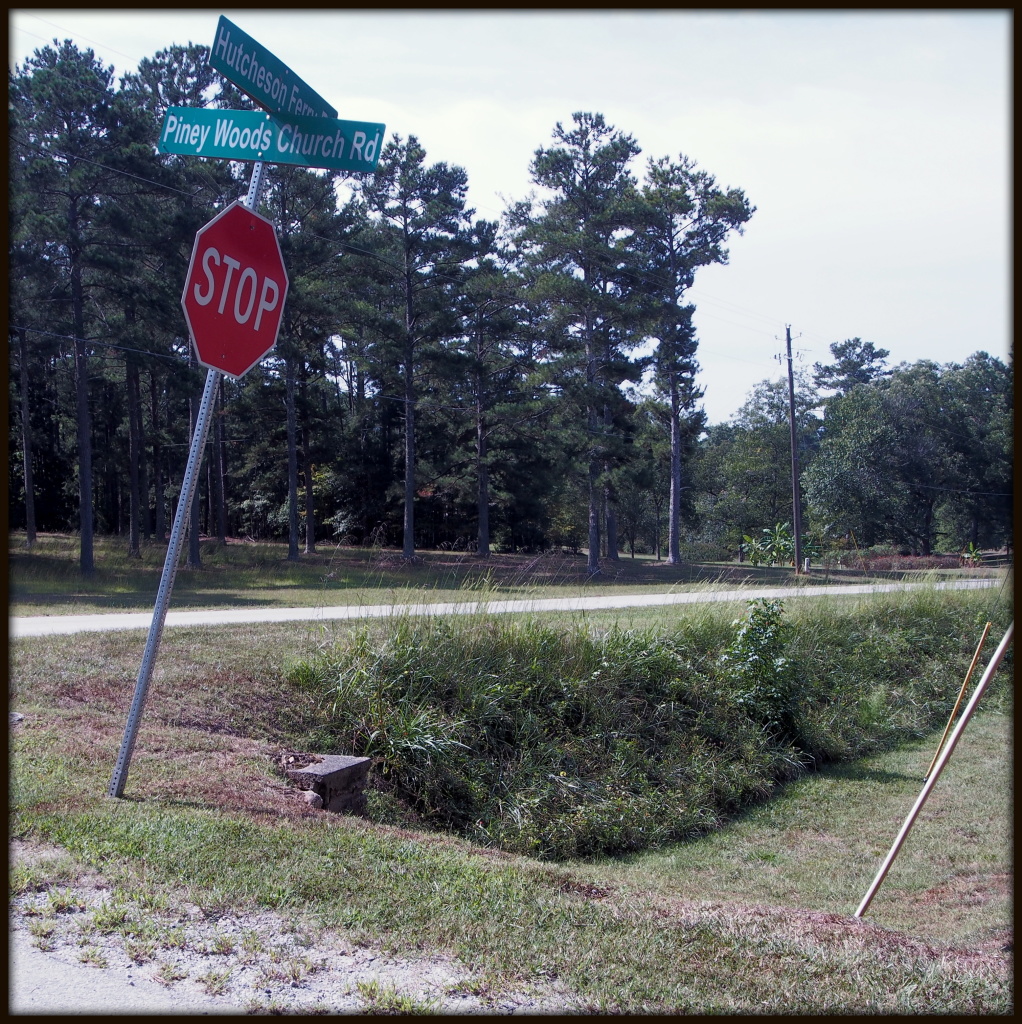On my morning Piney Woods Church walk today, I wandered to the edge of a patch of weeds in search of a flower, and ended up discovering a roadside zoo. I walked from one end of the road to the other, the intersection with Hutcheson Ferry Road. Looking down the road, I saw a brilliant red trumpet-shaped flower vining up a sweetgum sampling in the road bank. I waked down the road to examine it; then, turning to look back, I noticed the same flower scattered throughout the patch of weeds. I strolled into the grass-lined gully beside Piney Woods Church Road, to get a couple of close-ups of the lovely blooms. They turned out to belong to the Small Red Morning Glory (Ipomoea coccinea), a native of tropical America that has become naturalized to moist soil and waste places throughout the Southeast.
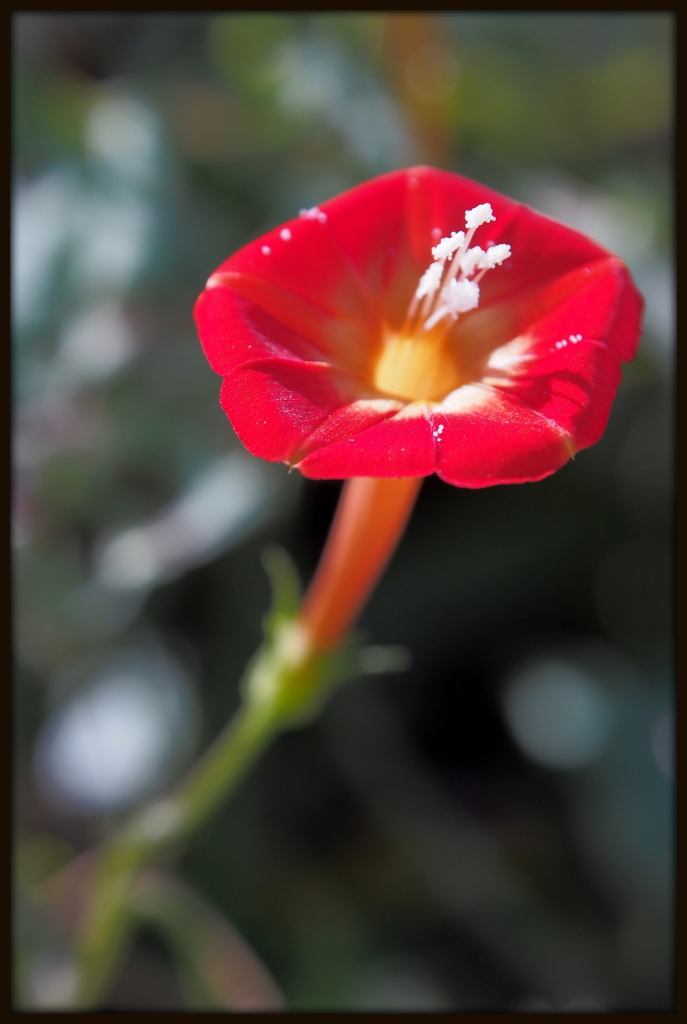
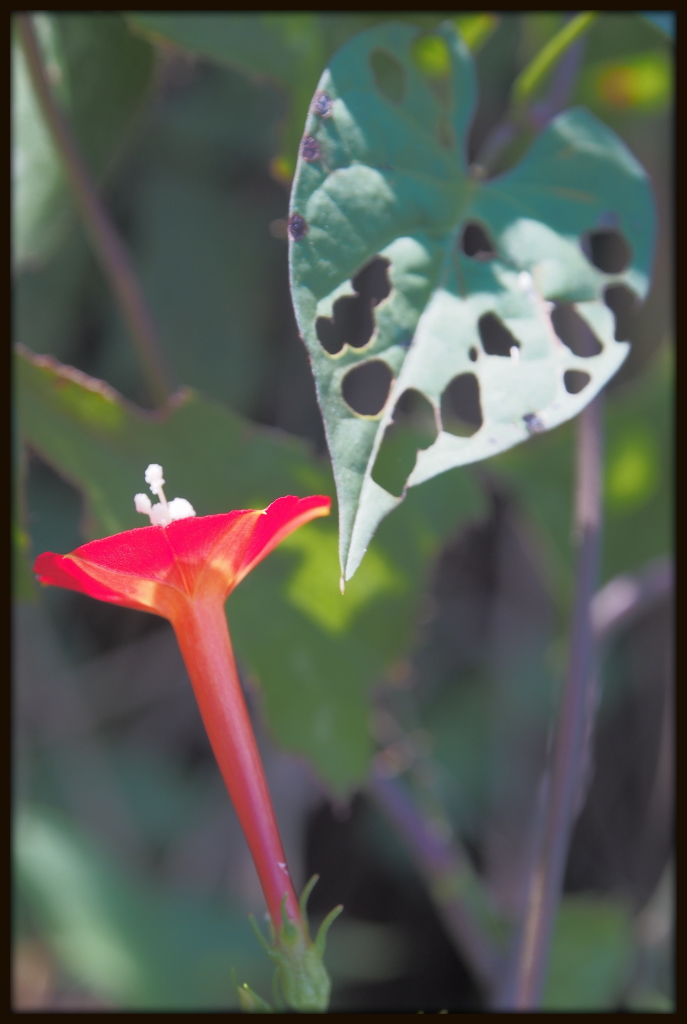
I had just finished a series of photographs when I felt something on my leg. I glanced down, and saw a black beetle, about an inch in length. I am proud to say that I did not react right away to flick it away, but instead started taking pictures. It seemed quite inquisitive and almost “cute”, in a beetle-ish sort of way. After half a dozen pictures, I gently flicked the top of my sock to send him (or her) onto the grass. There, I took another few photographs. This quite charming beetle turned out to be none other than the Margined Blister Beetle (Epicauta funebris). Evidently I was wise not to perturb it; as Bill Bixby used to remark on the 1980s TV show, “The Incredible Hulk”, “Don’t make me angry. You wouldn’t like me when I’m angry.” In this case, the blister beetle evidently secretes a caustic chemical that, not surprisingly, can cause skin irritation and blisters. The substance is even more toxic to horses. A handful of crushed beetles, mixed in with a meal of alfalfa hay, can be fatal. Still, I find this beetle quite endearing.
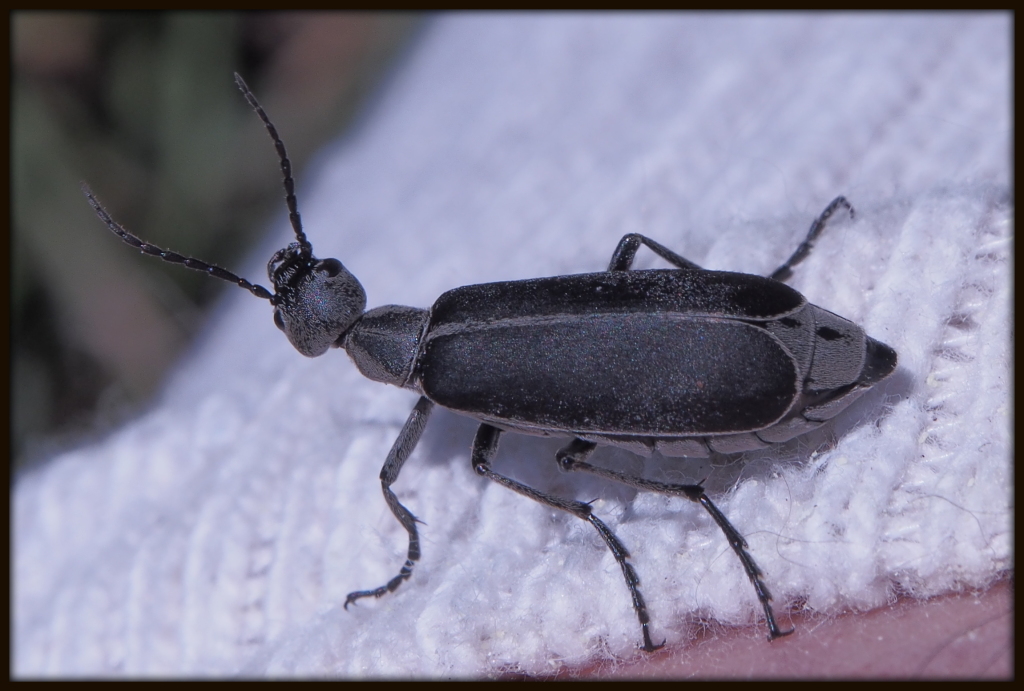

Glancing through the weeds along the roadbank, I noticed a thin katydid perched on a stem. It was most likely the Slender Meadow Katydid (Conocephalus fasciatus).
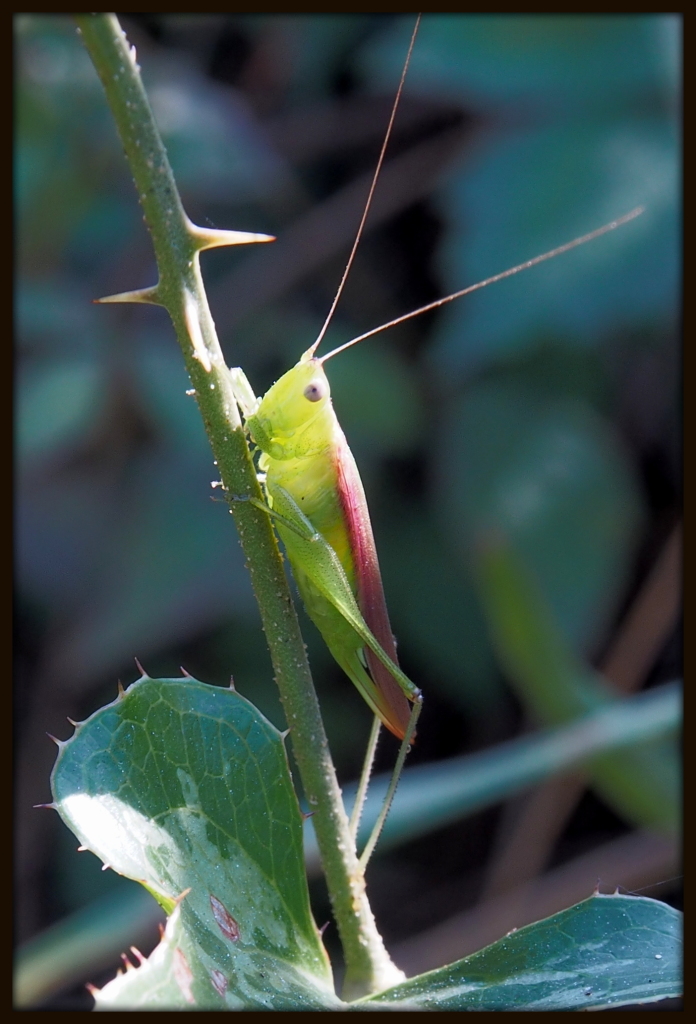
A nearby stem held an even more impressive specimen — a large Differential Grasshopper (Melanoplus differentialis). How stunning!
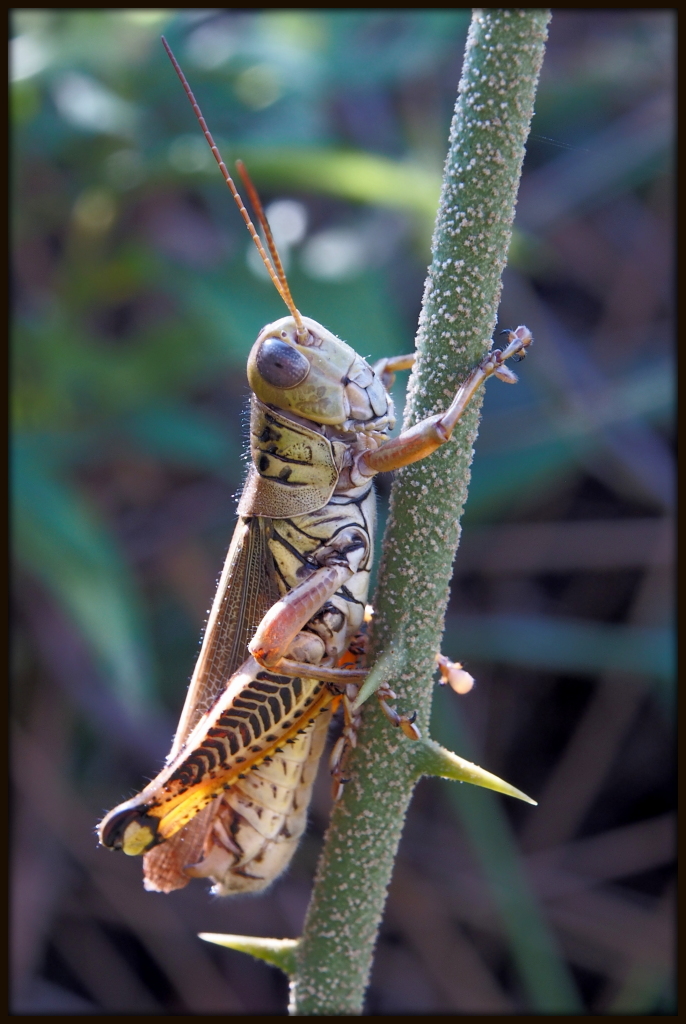
Nearby was yet another singing insect of late summer: a Fork-Tailed Bush Katydid (Scudderia furcata).
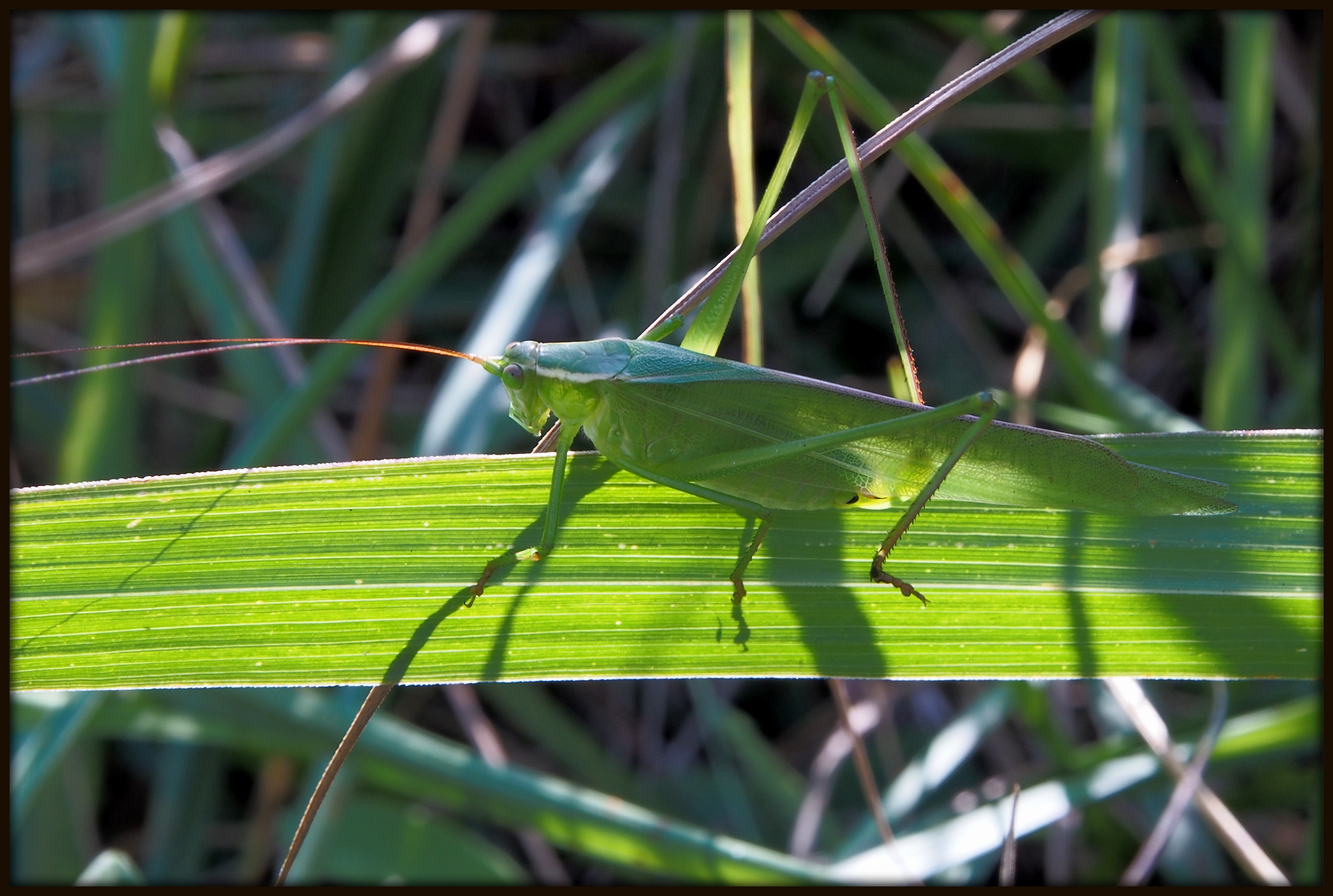
As I left this site of so many new discoveries, I glanced back and took a photograph. This roadside zoo might not have a neon sign, gift shop, or parking lot, but it is well worth the visit!
